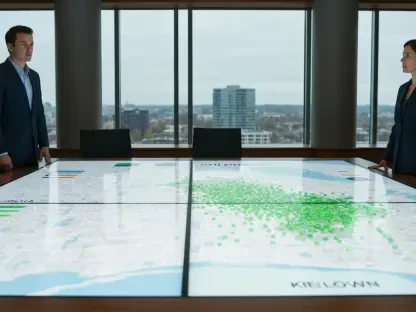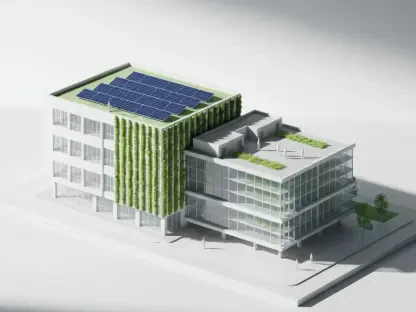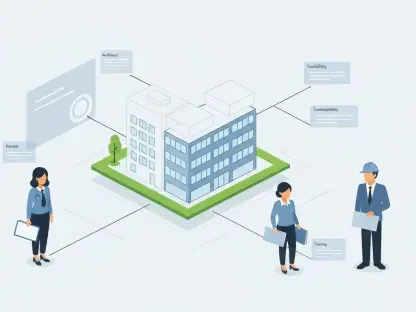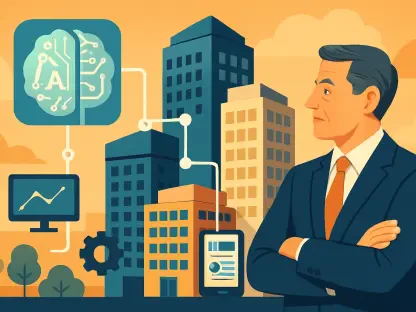Luca Calaraili is a seasoned expert in the field of construction, renowned for his profound insights into design and architecture. His passion extends beyond traditional boundaries into the realm of technological innovation, making significant impacts in infrastructure management. In this engaging interview, we explore the themes of executive leadership, strategic planning, and the intersection of technology and customer service in the infrastructure industry.
Can you share your thoughts on what drew you back to 407 ETR after your previous tenure with the company?
Returning to 407 ETR felt like a natural progression in my career. The firm has a dynamic environment and intriguing challenges that align with my experiences and aspirations. My earlier tenure gave me a comprehensive understanding of the company’s operations, and the opportunity to lead it now allows me to bring my substantial international experiences back to a familiar platform. The company’s commitment to innovation and growth in tolling infrastructure made the decision even more appealing.
How has your previous experience at Ferrovial and your work in North Texas highways prepared you for the CEO role at 407 ETR?
Working at Ferrovial and on the North Texas highways provided me with invaluable insights into managing complex infrastructures and enhancing connectivity. These roles demanded strategic decision-making and operational efficiency on a large scale. The exposure to different regulatory environments and the need to balance multifaceted stakeholder interests have equipped me to address similar challenges at 407 ETR, ensuring the company’s continued success in a competitive global landscape.
Can you elaborate on your vision for 407 ETR during your tenure as CEO?
My vision for 407 ETR involves leveraging technology to pioneer smarter and more efficient tolling systems. We aim to enhance the customer experience by reducing congestion and improving traffic flow. Implementing sustainable practices to minimize our environmental footprint is also a priority. I foresee 407 ETR not just as a roadway but as a key connector that bolsters economic activity and addresses urban mobility challenges through cutting-edge solutions.
What specific innovations do you foresee implementing to enhance the customer experience on Highway 407?
We are looking to integrate advanced traffic management systems that utilize real-time data analytics to predict and manage traffic flow more efficiently. Additionally, developments in contactless tolling and user-friendly apps will allow for seamless transactions, reinforcing our commitment to customer convenience. Eventually, these systems will provide customers with personalized travel insights, enhancing their overall journey on Highway 407.
How do you plan to tackle any challenges associated with managing a toll highway such as 407 ETR?
Managing a toll highway presents unique challenges such as maintaining infrastructure, ensuring safety, and handling public perceptions about tolling. We will address these by adopting proactive maintenance strategies and continuous stakeholder engagement. It’s crucial to communicate the benefits of toll roads effectively — such as reduced travel times and diversion of traffic from congested routes — to foster broader community support and understanding.
What strategies will you employ to ensure long-term value for 407 ETR’s stakeholders?
Long-term value is built on innovation, reliability, and stakeholder collaboration. We plan to invest in infrastructure improvements and cutting-edge technologies that enhance operational efficiency and customer satisfaction. Additionally, building strong relationships with government entities and the local community will be key. Transparent and frequent communication regarding our long-term plans and achievements will also ensure stakeholders feel valued and informed.
Could you describe your approach to increasing highway capacity and connectivity, drawing from your experience in the Dallas-Fort Worth area?
From my time in Dallas-Fort Worth, I learned the importance of viewing highway infrastructure as a network rather than an isolated component. Increasing capacity is not just about expanding physical lanes but optimizing current infrastructure through the use of technology like dynamic toll lanes and smart sensors. Improving connectivity also involves collaborating with other transport modes, such as public transport systems, to provide a cohesive and efficient travel experience.
How do you plan to leverage your international experience to benefit 407 ETR’s operations in Canada?
My international experience has given me a broad perspective on best practices worldwide, allowing for the strategic import of innovative solutions that can be adapted locally. In Canada, this means tailoring approaches that respect regional regulatory environments while introducing proven methods for enhancing road performance, customer satisfaction, and sustainability. International collaborations can also introduce fresh perspectives that drive forward-thinking initiatives.
In what ways do you plan to drive operational excellence at 407 ETR?
Operational excellence will be driven by fostering a culture of continuous improvement and innovation. Encouraging cross-functional teamwork and investing in employee development are priorities, along with adopting data-driven decision-making frameworks. Streamlining processes through digital transformation initiatives will not only enhance efficiency but will also improve responsiveness to market changes and customer needs.
How do your previous leadership roles influence the way you intend to lead the team at 407 ETR?
Leadership to me is about empowering people and fostering an environment where teams can thrive. My past roles have taught me the value of open communication and inclusivity in decision-making. At 407 ETR, I intend to prioritize collaboration across all levels and encourage an entrepreneurial spirit, where team members feel valued and are motivated to contribute innovative ideas that push our company forward.
What lessons from your tenure as CEO at I-77 Mobility Partners will you apply to your new role at 407 ETR?
At I-77 Mobility Partners, one crucial lesson was the importance of agility in both strategy and operations. The ability to pivot quickly in response to regulatory or market changes is vital. Additionally, fostering community engagement is essential — maintaining transparency and building trust with the public ensures smoother project implementations and enhances the company’s reputation.
How important is collaboration with local and international bodies to your strategic plans for 407 ETR, and how do you plan to foster such partnerships?
Collaboration is a cornerstone of our strategy. Establishing partnerships with governmental, academic, and international bodies can open avenues for shared knowledge and innovation. To foster these relationships, we will engage in regular dialogues, participate in joint initiatives, and contribute to industry forums. This collaborative network will help us stay at the forefront of infrastructure development and policy trends.
In your opinion, what sets 407 ETR apart from other toll highways that you’ve managed or interacted with globally?
407 ETR is unique in its extensive use of technology and its commitment to customer-centric operations. Its efficient tolling system, along with a strong emphasis on traffic management and environmental sustainability, sets it apart. Moreover, the company’s proactive approach to stakeholder engagement and its strategic position in a vital economic corridor also enhance its distinction on the global stage.
How do you plan to balance the technical and customer service aspects of managing a toll highway to ensure optimal operation?
Balancing these aspects requires a holistic strategy that views technical innovations as enablers of better customer service. Investing in robust IT systems ensures reliability and efficiency, while customer feedback mechanisms will guide service improvements. Training our staff to be both technically proficient and customer-focused will also ensure that we deliver the highest standard of service in all interactions.
With your extensive experience across various countries, what unique challenges do you anticipate facing in Canada specifically, and how do you intend to address them?
Canada presents its own set of regulatory and weather-induced challenges that differ from other regions I’ve worked in. The rigorous climate demands resilient infrastructure solutions, and the regulatory environment necessitates thorough compliance and adaptability. Approaching these challenges with tailored solutions that take into account local nuances is key, along with maintaining open channels with local partners to ensure suitable and sustainable development strategies.
What is your forecast for the future of toll highways, especially given trends in technology and transportation?
The future will see toll highways becoming smarter and more integrated with broader transportation networks. With advancements in AI and IoT, we expect to see highly personalized travel experiences and even greater efficiencies in traffic management. As electric and autonomous vehicles become more prevalent, toll highways will evolve to support these technologies, further embedding them within smart city infrastructures and contributing to sustainable urban development.









